Masaccio, Holy Trinity
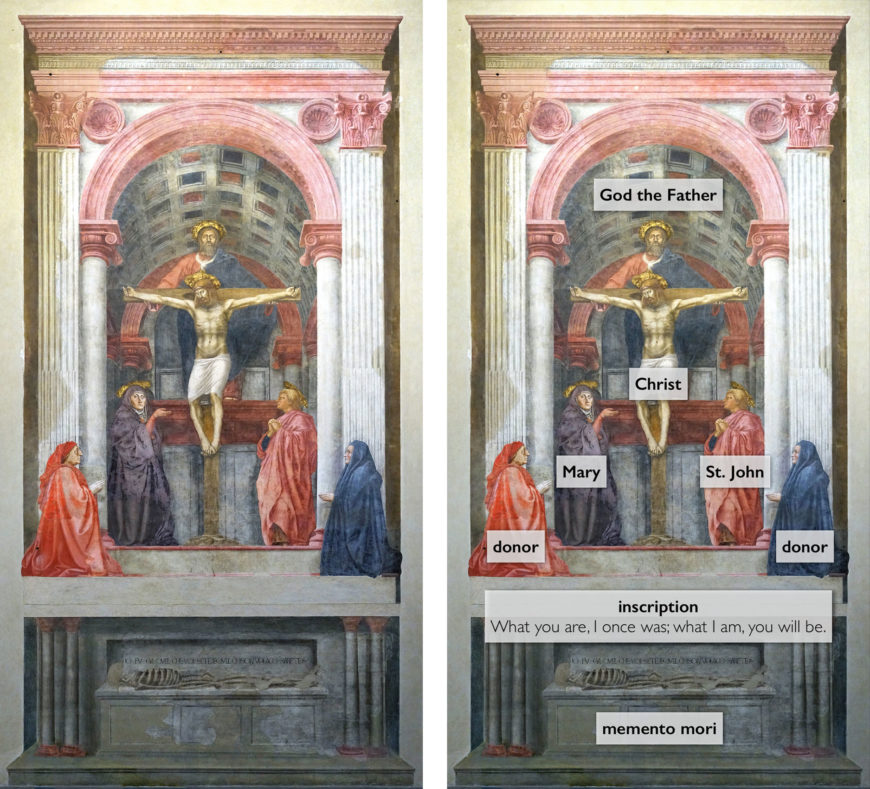
For his Holy Trinity in the Florentine church of Santa Maria Novella, Masaccio creates a pyramidal arrangement with God, the dove of the Holy Ghost and the head of Christ at the apex; Mary and John standing on either side of the cross; and the donors (possibly Lorenzo Lenzi and his wife) at the base of the triangular composition. Below them is a skeleton lying in a sarcophagus with the inscription “I was once what you are, and what I am you will become,” which works as a memento mori (reminder of death) to remind viewers of the brevity of life.
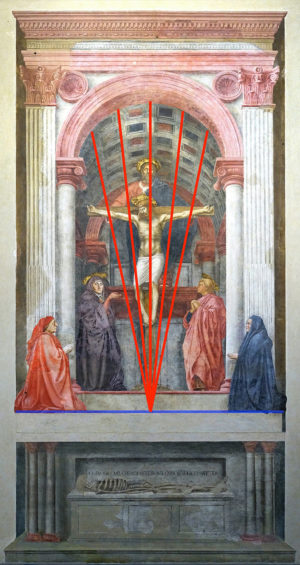
Masaccio was the first painter in the Renaissance to incorporate Brunelleschi’s discovery, linear perspective, in his art. Have a close look at this perspective diagram. The orthogonals can be seen in the edges of the coffers in the ceiling (look for diagonal lines that appear to recede into the distance). Because Masaccio painted from a low viewpoint, as though we were looking up at Christ, we see the orthogonals in the ceiling, and if we traced all of the orthogonals, we would see that the vanishing point is on the ledge where the donors kneel on.
God’s feet
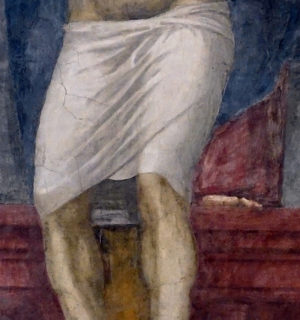
God is standing in this painting. This may not strike you all that much when you first think about it because our idea of God, our picture of God in our mind’s eye—as an old man with a beard—is very much based on Renaissance images of God. So, here Masaccio imagines God as a man. Not a force or power, or something abstract, but as a man. A man who stands—his feet are foreshortened, and he weighs something and is capable of walking. In medieval art, God was often represented by a hand, as though God was an abstract force or power in our lives—but here, he seems so much like a flesh and blood man. This is a good indication of humanism in the Italian Renaissance.
Masaccio’s contemporaries were struck by the palpable realism of this fresco, as was Giorgio Vasari, who lived over one hundred years later. Vasari wrote that “the most beautiful thing, apart from the figures, is a barrel-shaped vaulting, drawn in perspective and divided into squares filled with rosettes, which are foreshortened and made to diminish so well that the wall appears to be pierced.”[1]
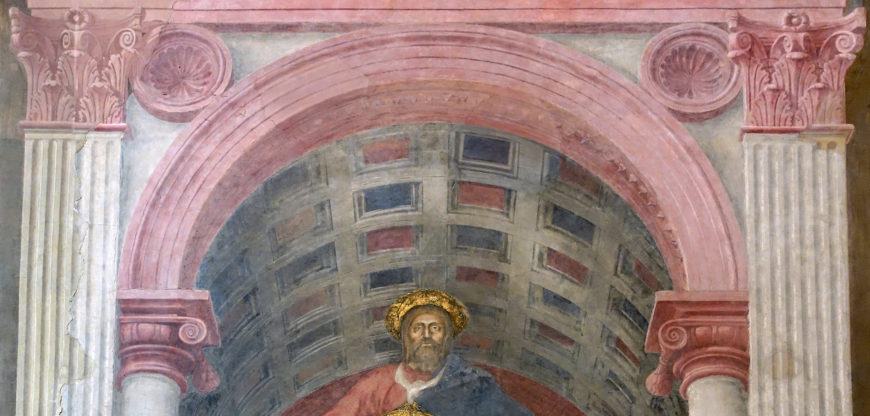
The architecture
One of the other remarkable things about this fresco is the use of the forms of classical architecture (from ancient Greece and Rome). Masaccio borrowed much of what we see from ancient Roman architecture, and may have been helped by the great Renaissance architect Brunelleschi.
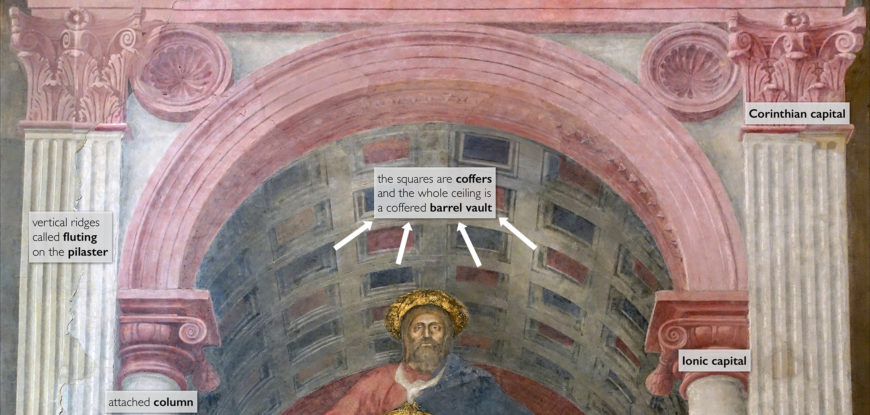
- Coffers—the indented squares on the ceiling
- Column—a round, supporting element in architecture. In this fresco by Masaccio, we see an attached column
- Pilasters—a shallow, flattened-out column attached to a wall—it is only decorative, and has no supporting function
- Barrel Vault—vault means ceiling, and a barrel vault is a ceiling in the shape of a round arch
- Ionic and Corinthian Capitals—a capital is the decorated top of a column or pilaster. An ionic capital has a scroll shape (like the ones on the attached columns in the painting), and a Corinthian capital has leaf shapes.
- Fluting—the vertical, indented lines or grooves that decorated the pilasters in the painting—fluting can also be applied to a column[2]
Masaccio adopts a Roman triumphal arch for his setting of the Crucifixion to symbolize Christ’s triumph over death.
- Vasari, “Masaccio” in Lives of the Most Excellent Painters, Sculptors, and Architects the Artists (first published in 1550 in Italian). ↵
- Dr. Steven Zucker and Dr. Beth Harris, "Masaccio, Holy Trinity," in Smarthistory, October 10, 2019, accessed February 27, 2023, https://smarthistory.org/masaccio-holy-trinity/. Flickr IconBrowse Smarthistory images for teaching ↵

